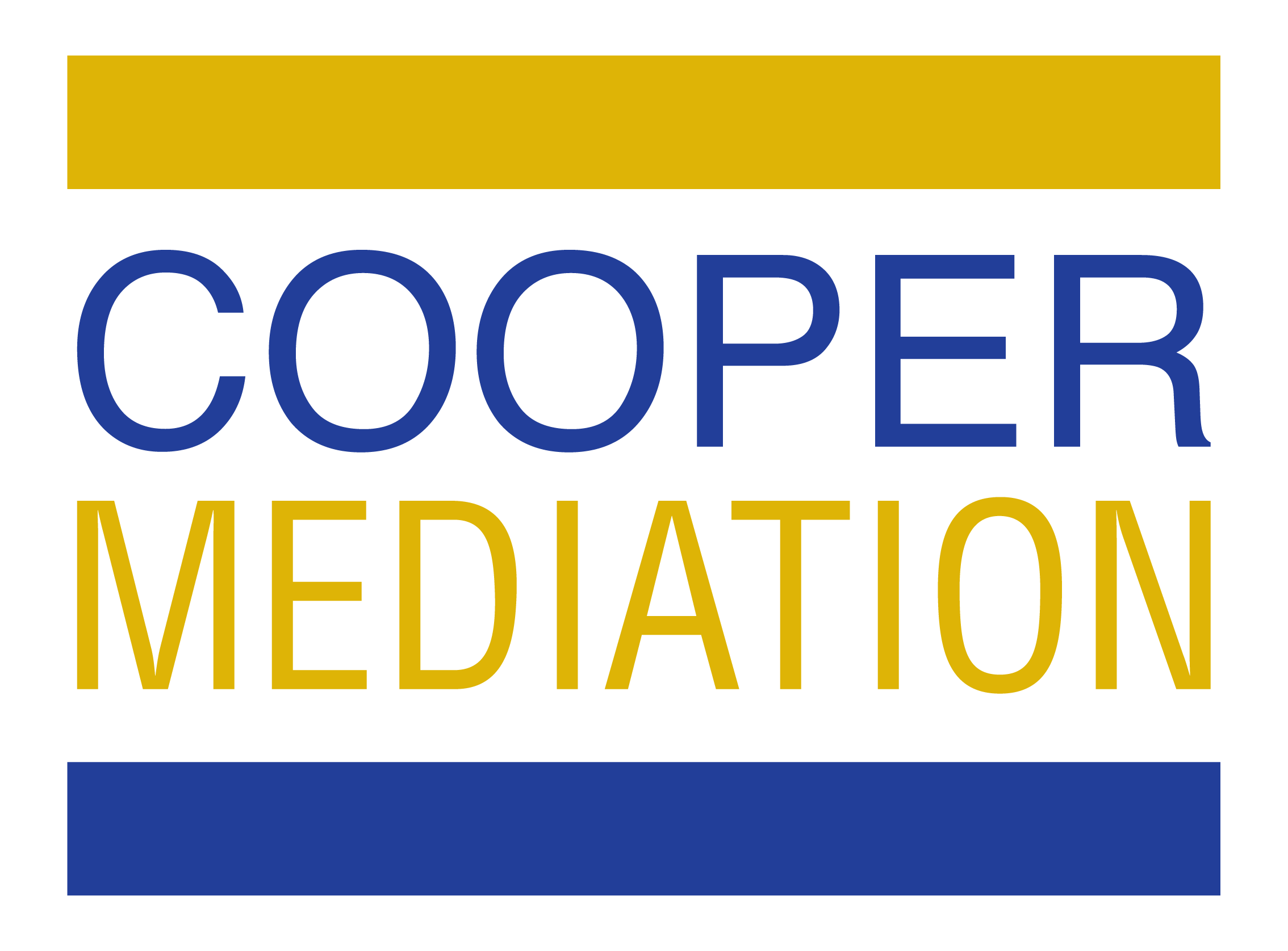
24 May Mediating A Complex Multi-Party Matter
Mediating a complex, multi-party case is a lot like baking a cake. It’s not enough to have the right ingredients. You need to observe careful direction and patience to blend the ingredients in the right quantities and at the just the right time to produce the best result possible.
In this particular case, which was of high sensitivity and extreme confidentiality, there were a large number of claims arising from an event for which the defendants might not attract any liability. Certainly, this was the official defence position though they appreciated that there was risk to their position. Win or lose, there were going to be significant legal expenses accrued in defending these claims to and through a trial which would last months in total.
There were also a host of factual issues in dispute. Moreover, some very important legal issues in this case could have seen the litigation continue to a provincial appellate court.
The Defendants’ Preference
If it was solely up to the defendants, we would have dispensed with the mediation process entirely and they would have authorized me to serve as facilitator and negotiator. In this scenario, I would have obtained settlement demands from each of the many plaintiff lawyers, presented those demands to lawyers for the defendants and then circled back with offers to the many plaintiff lawyers.
The defence interests appeared to be motivated primarily by economics. They projected high six-figure or low seven-figure defence costs, relatively low risk prospects for a sustainable finding of liability and, before any liability considerations, damage assessments as low as five figures to as much as low seven figures.
The defence was initially reluctant to participate in a full-blown mediation process. Given that there were approximately 12 pending actions, participating in a standard mediation process could take two to three weeks to complete.
Establishing Consensus Among The Plaintiffs
It was far more challenging to identify the interests on the part of the plaintiffs. A variety of factors, including the number of different plaintiffs, their separate representation, and widely varying values of claims, made it difficult to establish how they would want to individually and collectively proceed.
I thought it important for the plaintiffs to receive an unfiltered view of the overarching issue of liability. This concept would ultimately drive the settlement discussions and it could stand in the way of settlement if it was not properly understood. Moreover, I wanted each of the plaintiffs to be part of a process and feel that they were being heard, understood and respected.
Fashioning The Most Efficient And Fair Mediation Process
In a series of pre-mediation caucuses, we were able to design a time-sensitive and cost-efficient process.
The defendants proposed a process whereby one plenary session, involving lawyers for all parties, would address the legal and liability issues and overall mediation processes.
Counsel for the various plaintiffs delivered individual mediation memoranda. These statements addressed the common issue of liability and the unique or personal issues applicable to their individual client’s own claim for damages. The liability portions of the mediation memoranda were shared amongst all counsel. The portions of the memoranda dealing with damages were shared with defence counsel only. If there had been an issue with finite insurance resources, those portions of the briefs dealing with damages would likely have been required to be shared.
Counsel for the defendants delivered omnibus mediation memoranda addressing the liability issues common to all plaintiffs. Separate mediation memoranda were delivered to address the individual plaintiffs’ claims for damages. This process respected privacy interests but allowed for a group discussion of the common issue of liability.
Sharing The Cost Of The Mediation
Establishing who would be responsible for the cost of the mediation and to what degree was another critical task in designing the process. The defendants agreed to pay a very substantial portion of the total cost of the mediation, regardless of its outcome. However, they required each plaintiff, through their lawyer, to commit to pay $1,000 plus HST as their individual contribution toward the mediation’s total costs. If a plaintiff’s individual claim was resolved, the defence would pay that plaintiff’s share of the cost of the mediation.
I suspect the defence was interested in each plaintiff having some “skin in the game.” No one seemed to object to this approach.
Managing Settlement Discussions For 12 Actions
Confidential Offers
All plaintiffs, defence representatives and their respective lawyers met for an initial plenary session. This portion of the mediation addressed the mediation process generally and the specifics applicable to the mediation of each of these 12 actions.
Counsel for the defendants made it clear that any offers made in the subsequent individualized mediation sessions were to be absolutely confidential. These offers could not be shared with anyone other than the plaintiff’s legal and financial advisors and immediate family. Specifically, the offers could not be shared or compared as amongst lawyers for other plaintiffs.
Counsel for the defendants also communicated that any potential settlements reached in the individualized mediation sessions would be tentative or provisional, subject to concluding all of the individualized mediation sessions. Counsel for the various plaintiffs were informed that the defendants reserved the right to settle all, some or none of the individualized matters. In other words, the defendants maintained that settling anything was not contingent on settling everything. However, they certainly implied they would need most, if not all, claims to be settled for the tentative or provisional settlements to be confirmed.
Confidential Settlements
Finally, if any settlements were reached in these actions, the defendants would require each plaintiff to sign a full and final release, including a confidentiality clause. Case law seems fairly clear at this point that a confidentiality clause must be bargained for and cannot be assumed as part and parcel of a standard full and final release.
Counsel for the plaintiffs were agreeable to this approach. Certainly, no one voiced any overt objection. I am quite certain that the lawyers for the plaintiffs appreciated the challenges in relation to the liability issue and understood that the defence motivation to resolve the claims would be influenced to a large extent by their ability to wrap up most, if not all, litigation once and for all.
In spite of this very prominent “loose end” surrounding liability and the ability of the defendants to confirm or reject settlement at the end of the individualized mediation sessions, I did not sense any reluctance on the part of any of the parties to hard bargaining as we moved into the individualized mediation sessions.
Abbreviated Mediations By Design
The individualized mediation sessions were designed to be abbreviated.
Given that all parties had already heard opening remarks in relation to the mediation process and detailed submissions in relation to the liability issues, we were able to “hit the ground running.” There was a discussion of the damages, but it was relatively abbreviated. Each individualized mediation session was designed to be completed in three hours. This time limit required each side to have a firm grasp of the damages so that offers could be prepared and exchanged in a timely fashion.
In some cases, the tentative or provisional agreement for the quantum of damages was reached in three or four rounds of offers. In other cases, there were a greater number of offers. Assessable disbursements were significant as part of the overall settlement process. It was imperative to prepare those lists in advance of the mediation and provide them to defence counsel so that disbursements could be considered for purposes of securing settlement authority. In most cases, the parties were able to reach an agreement in principle in less than three hours. We ran sessions starting at 9:00 AM, 12 noon and 3:00 PM. We purposely put the more contentious or complex claims for damages into the 3:00 PM time slot to allow for the option of “overtime.”
By the middle of the last day, all but one of the plaintiffs’ claims had been settled and the last claim settled by the end of the day. I had queued up several draft emails confirming settlements. Once the last of the plaintiff claims was settled, I was able to hit the “send” button on a dozen e-mails and these matters were put to rest.
My Key Takeaways
Reflecting on this multi-party mediation, I believe it clearly demonstrates that preparation and process are truly interdependent considerations. I was informally retained very early in the mediation process to consult with stakeholders. The idea was for me to try to get a good sense of what these stakeholders would be looking for out of the mediation process.
These communications allowed me, with significant input from the stakeholders, to design a mediation process that efficiently managed time and contained costs from ballooning to exorbitant levels. The process would only work if people were prepared to commit to the timelines and deadlines to complete their respective tasks. Whether it was preparing and delivering mediation memoranda, drawing up a list of assessable disbursements, planning a series of offers to expedite the negotiation process, or securing settlement authority, getting buy-in to the process was absolutely necessary for it to work as well as it did.
Conclusion
When all was said and done, I imagine the parties collectively saved hundreds of thousands of dollars on experts’ fees, possibly more than $1,000,000 on legal fees and managed to resolve 12 lawsuits with less than a full week of work. If these actions went to trial, it would take years to set the court date and months more to be tried.
This is not a tale of a mediator with superpowers; rather, it is very much an example of how many people with distinct and potentially differing interests can collectively put their minds toward solving a problem by designing and implementing a process that would facilitate a solution.
Benjamin Franklin famously advised fire-threatened Philadelphians that “an ounce of prevention is worth a pound of cure.” Clearly, preventing fires is better than fighting them. The same concept applies to complex multi-party mediations. Preparation, forethought and planning early in the timeline leading to mediation is far more effective and preferable. Waiting until the last few days or hours leading up to the mediation or on the day of the mediation itself is a recipe for failure. Settlements don’t magically appear; they are the result of careful planning and forethought.
ABOUT THE AUTHOR
 Vance Cooper, Cooper MediationVance Cooper is principal of Cooper Mediation Inc. Vance devotes 100% of his professional time to mediating and arbitrating primarily personal injury and insurance cases. He serves as an arbitrator in loss transfer and priority disputes under the Insurance Act.
Vance Cooper, Cooper MediationVance Cooper is principal of Cooper Mediation Inc. Vance devotes 100% of his professional time to mediating and arbitrating primarily personal injury and insurance cases. He serves as an arbitrator in loss transfer and priority disputes under the Insurance Act.
Vance can be reached at vance@coopermediation.ca or (647) 777-4011.
To schedule a mediation with Vance, visit: https://coopermediation.ca/vances-online-calendar/.
